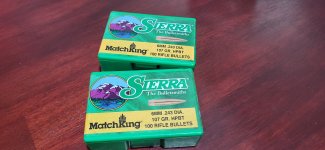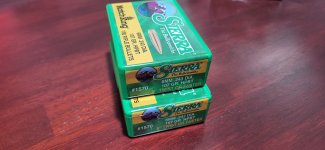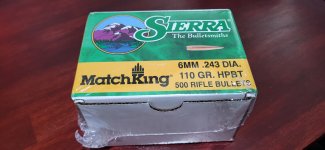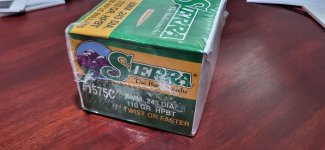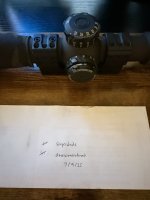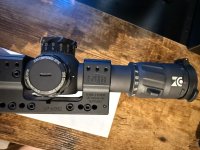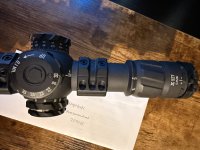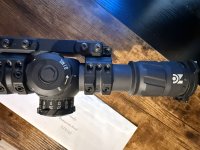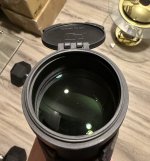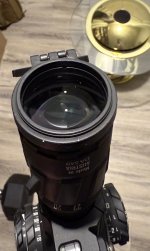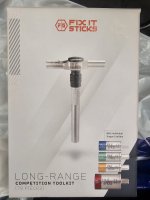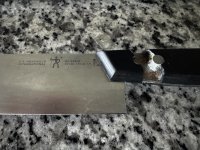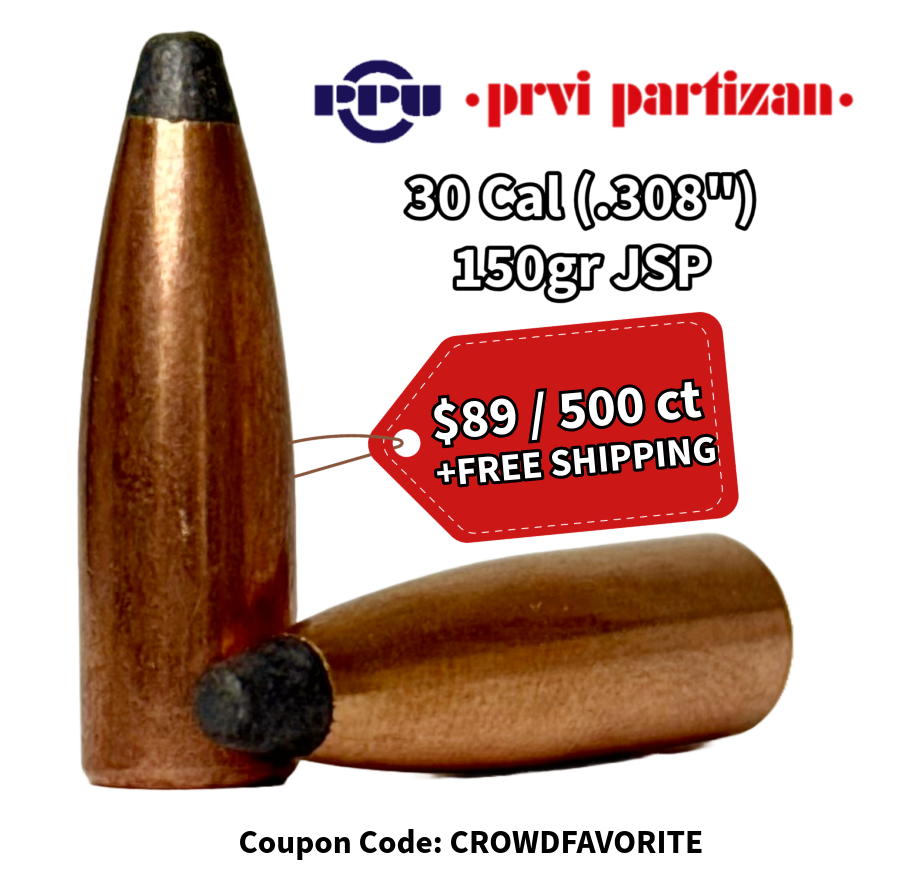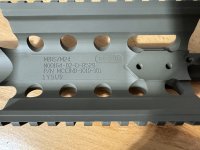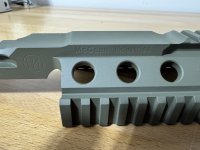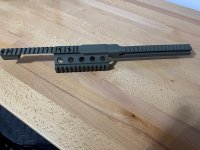Join the Hide community
Get access to live stream, lessons, the post exchange, and chat with other snipers.
Register
Download Gravity Ballistics
Get help to accurately calculate and scope your sniper rifle using real shooting data.

Install the app
How to install the app on iOS
Follow along with the video below to see how to install our site as a web app on your home screen.
Note: This feature may not be available in some browsers.
You are using an out of date browser. It may not display this or other websites correctly.
You should upgrade or use an alternative browser.
You should upgrade or use an alternative browser.
Filter
Filters
Show only:
Accessories WTB VUDOO .22LR or L3I Magazines
- Buy - Sell - Trade
- 6 Replies
Want to buy Vudoo or L3I .22lr magazines. Thanks.
SOLD ZCO 527 MPCT 3 With Sphur SR-6002
- Buy - Sell - Trade
- 0 Replies
ZCO 527 with the MPCT 3 reticle, with the 15mil locking elevation turret. Scope is in box with flip caps, scope chap, and is mounted in a SPHUR SR-6002 one piece mount. Bought recently from a snipershide member but never mounted it, USPS lost my HK417 upper so that’s that, decided to move to another project. No wear at all on the scope and is practically brand new. Currently in Seattle, WA. Price is $3300 shipped PayPal f/f, Zelle or money order. Edit: SPF
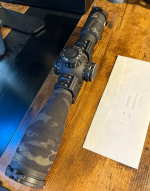

Attachments
Biker murdered
- By Im2bent
- The Bear Pit
- 10 Replies
Tim Kennedy is a liar
- By akmike47
- The Bear Pit
- 38 Replies
Let’s put on our sarcastic surprised faces. The fake apology is no surprise he’s been a douche for years. He also doesn’t think you should be allowed to own firearms so fuck him either way
Login to view embedded media
Now do RO
Login to view embedded media
Now do RO
Interesting real twist, on many a SHTF movie opening
- The Bear Pit
- 11 Replies
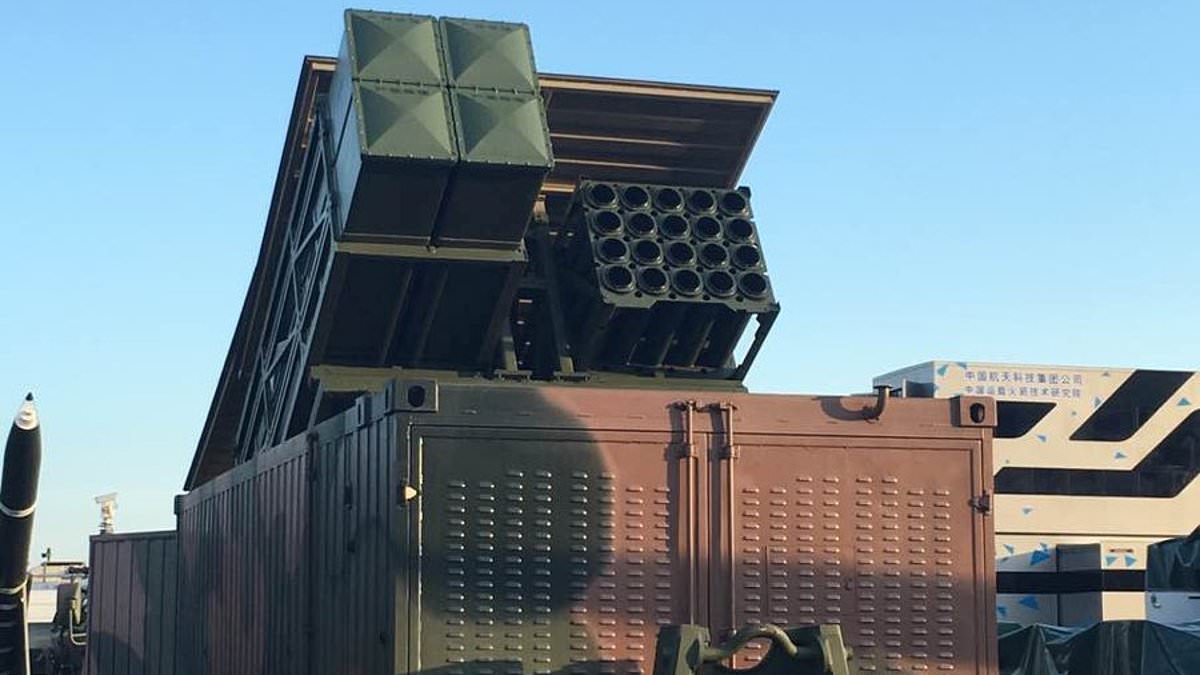
A formidable enemy secretly hoarding a dangerous cache of weapons right under our noses - Internewscast Journal
It looks like a regular shipping container, loaded aboard a cargo ship sailing up from the mega-port at Manzanillo. However, behind the corrugated steel
SOLD Fix it sticks
- By Deputy617
- Buy - Sell - Trade
- 9 Replies
Brand new in the package.
$385 shipped pp.ff, venmo, zelle.
Not looking for any trades.
$385 shipped pp.ff, venmo, zelle.
Not looking for any trades.
Attachments
FAFO
- By JM4590
- The Bear Pit
- 878 Replies
Kitchen knife handle replacement/repair
- By rjacobs
- The Bear Pit
- 13 Replies
Got a 20+ year old JA Henkels santuko knife that the handle has finally cracked and broken off. They wont/cant repair. Still waiting to hear about a replacement knife under warranty. If they wont warranty it it wont hurt my feelings as 20+ years, the knife owe's me nothing.
Anybody on here that builds knives think they could make me something to replace this? Would need to drill rivets out, make new handle, and some way to attach it...maybe a machine screw and recessed nut type setup. I dont know how their original rivets are done. Maybe a material like G10 for the handle.
I did some google searching with no real source of somebody who readily does this, even though it seems to be a "common" problem with knives like this(not just Henkels knives).
Anybody on here that builds knives think they could make me something to replace this? Would need to drill rivets out, make new handle, and some way to attach it...maybe a machine screw and recessed nut type setup. I dont know how their original rivets are done. Maybe a material like G10 for the handle.
I did some google searching with no real source of somebody who readily does this, even though it seems to be a "common" problem with knives like this(not just Henkels knives).
Attachments
Krauger action wto switchlug build - 3 caliber ackley improved need advice. 510 whisper 338 lapua 300 rum.
- By Archimedes
- Bolt Action Rifles
- 16 Replies
Hey, so I’m putting together a rifle
Krauger vpr sst 338 long action receiver nitrided
3 barrels from McGowan precision
1 338 lapua 40 degree ackley improved 32 inch bull
1 300 rum ackley improved 32 inch bull, possibly extended cut chamber for 3.740 coal loads
1 510 whisper 10 bull
Xlr atom chassis, built as a pistol but can be converted to rifle. Pistol config is for the 510 whisper using a brace.
3.850 CIP magazines
West Texas ordnance switchlug system
Couple of questions
Can I modify the chassis to accept the switch lug system and where can I get it done in quality manner that’s not pricey.
Will wto take in McGowan barrels to do this build?
How likely am I to experience feeding issues with all 3 calibers?
Trigger recommendation?
Can I buy an extra bolt for the 300 rum from Krauger or perhaps some other company and how much will that run me?
Any recommendations overall on the feasibility of this build? Different parts recommendations or reputable gunsmiths? Am I missing anything here?
I’m selling my Remington sendero ii 300 rum to partially fund this, I figure the cheapest way for me to shoot all 3 calibers and do it easily is to go this route with the switchlug.
Main concerns are budgetary in nature.
Main point is to have a rifle system capable of shooting all 3 calibers accurately and to switch between the calibers easily, ergo switchlug.
Mandatory to be able to build it as a pistol first so I can have a 10 inch barrel and use a brace while also being able to use a rifle stock with the rifle barrels.
Krauger vpr sst 338 long action receiver nitrided
3 barrels from McGowan precision
1 338 lapua 40 degree ackley improved 32 inch bull
1 300 rum ackley improved 32 inch bull, possibly extended cut chamber for 3.740 coal loads
1 510 whisper 10 bull
Xlr atom chassis, built as a pistol but can be converted to rifle. Pistol config is for the 510 whisper using a brace.
3.850 CIP magazines
West Texas ordnance switchlug system
Couple of questions
Can I modify the chassis to accept the switch lug system and where can I get it done in quality manner that’s not pricey.
Will wto take in McGowan barrels to do this build?
How likely am I to experience feeding issues with all 3 calibers?
Trigger recommendation?
Can I buy an extra bolt for the 300 rum from Krauger or perhaps some other company and how much will that run me?
Any recommendations overall on the feasibility of this build? Different parts recommendations or reputable gunsmiths? Am I missing anything here?
I’m selling my Remington sendero ii 300 rum to partially fund this, I figure the cheapest way for me to shoot all 3 calibers and do it easily is to go this route with the switchlug.
Main concerns are budgetary in nature.
Main point is to have a rifle system capable of shooting all 3 calibers accurately and to switch between the calibers easily, ergo switchlug.
Mandatory to be able to build it as a pistol first so I can have a 10 inch barrel and use a brace while also being able to use a rifle stock with the rifle barrels.
Maggie’s Interwebs Help
- By db2000
- The Bear Pit
- 9 Replies
I’m looking to help a friend that can’t connect to several gun forums but can everything else on his WiFi. This is happening on his phone and tablet. Both android. I Googled it but didn’t really get what seems like useful help.
Anyone have a solution or explanation at least. Thanks
Error message:
“upstream connect error or disconnect/reset before headers. retried and the latest reset reason: connection timeout”
Anyone have a solution or explanation at least. Thanks
Error message:
“upstream connect error or disconnect/reset before headers. retried and the latest reset reason: connection timeout”
Rimfire Anschutz Model 54 Super Match
- By atombomb
- Buy - Sell - Trade
- 2 Replies
Great condition Model 54 Super Match with a ton of extras…. Bought this and a BR-30 in hopes of having time to shoot them, but they have been sitting in the safe too long. How many still have the original test target  PM any questions or trade offers. $2500
PM any questions or trade offers. $2500



Two of our true enemy's sparing
- The Bear Pit
- 3 Replies
I'm guessing that china just sent them, a we are here to play, message.
SOLD Nightforce nx8 1-8 FDE Fc-DMX
- By jwhjwh54
- Buy - Sell - Trade
- 3 Replies
Bought it brand new but I didn't keep the box because I thought I'd never put it up for sale. Awesome scope but I went too spendy the past couple months and need to make some regrettable sales. Great condition
$1400 with the mount


$1400 with the mount
Reloading Equipment Huge Discounts on Sierra 6mm, 6.5mm, and 30 cal SMK + More
- Buy - Sell - Trade
- 6 Replies
|
Here comes the distraction from yesterday
- The Bear Pit
- 10 Replies
Are they dirty? Oh Hell Yes, will anything beyond history books be done to them, Hell No.

 www.breitbart.com
www.breitbart.com
This all comes as well just after they realized their fuck up yesterday,
https://www.dailymail.co.uk/news/ar...ngton-D-C-panic-mode-decimate-Deep-State.html

Report: FBI Launches Investigation into John Brennan, James Comey
The FBI is investigating former CIA Director John Brennan and former FBI Director James Comey for their roles in the Trump-Russia probe.
This all comes as well just after they realized their fuck up yesterday,
https://www.dailymail.co.uk/news/ar...ngton-D-C-panic-mode-decimate-Deep-State.html
22 Creedmoor 77gr Sierra TMK aren't making it to the target
- By Iron Worker
- Reloading Depot
- 14 Replies
Shooting my 22 Creedmoor today in the hot NV desert. I was experiencing terrible, mysterious groups (Oblong holes) and missing shots at 100 yards, but only with Sierra 77gr TMK bullets. Hornady 62-grain ELD-VT bullets shot well. The 85.5gr Bergers did okay. I fireformed some 53gr V-max (22/250) they did fair, but made it to kick up dirt at 300yds.
I never had this problem in the wintertime with these bullets? 8"twist 3,425 FPS. I just bored-scoped the BBL; it needs cleaning, but the Carbon ring was minimal. I was worried that my BBL was shot.
I never had this problem in the wintertime with these bullets? 8"twist 3,425 FPS. I just bored-scoped the BBL; it needs cleaning, but the Carbon ring was minimal. I was worried that my BBL was shot.
SOLD MIRS/M24 REV B REM 700 LA
- By danielleann
- Buy - Sell - Trade
- 3 Replies
New Cerakote. $1300 shipped.
Attachments
Any Feedback on Swarovski DS2 5-25?
- By mkollman74
- Observation & Sighting Devices
- 5 Replies
Not seeing any info on this scope here, and very little elsewhere. Anyone here with first hand experience?
SOLD Defiance Action 50% Off Certificate
- By Jettheterror
- Buy - Sell - Trade
- 7 Replies
Defiance Certificate for 50% off. I will send you the ID for the certificate after payment. Win Win for everyone for this price!
Price: $400

Price: $400
SOLD Free Banish 22K Suppressor Cert
- By Raider4044
- Buy - Sell - Trade
- 1 Replies
Certificate for free Silencer Central Banish 22K. Valued at $465.
$175 Takes it!

$175 Takes it!

SOLD Zero Compromise ZCO 5-27x56 FFP MPCT2 with Hawkins Rings
- By stevenc23
- Buy - Sell - Trade
- 7 Replies
Zero Compromise 527 ZCO 5-27x56 FFP Illuminated MPCT2 with EXTRAS
Used scope, One Owner - Glass is perfect
Includes Hawkins Heavy Tactical Rings, MK Machining Throw Lever, And Short Sun Shade
$3,575 shipped and insured (not looking for trades)



Used scope, One Owner - Glass is perfect
Includes Hawkins Heavy Tactical Rings, MK Machining Throw Lever, And Short Sun Shade
$3,575 shipped and insured (not looking for trades)
Precision Rifle Gear bartlein green carbon fiber
- By Sigma
- The Armory
- 1 Replies
does anyone know if any place stocks these?
PRS Rifle Build
- By cobra655
- Bolt Action Rifles
- 24 Replies
Ok I am finally getting to the point I can finish my PRS bolt rifle build. I have an MDT ACC chassis. Using a Terminus Zeus QC action and will probably get a barrel from Josh at patriot Valley Arms. I intend to go to 6mm GT. What should I look for as optimal barrel length? Probably going to go with an M24 barrel profile. Or should I just go with a 24" 6.5 Creedmore barrel until I finish my reloading set up in a few months?
Load more
